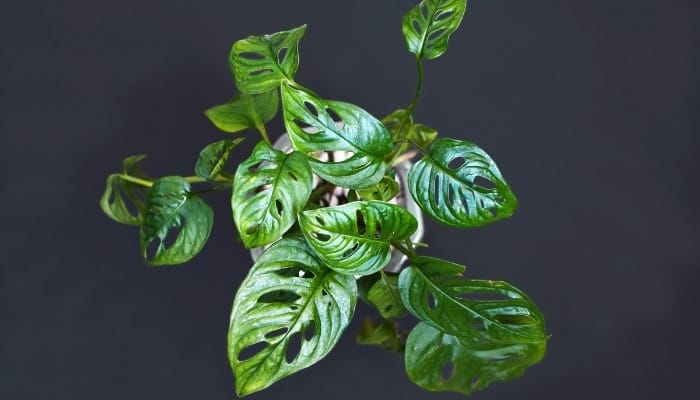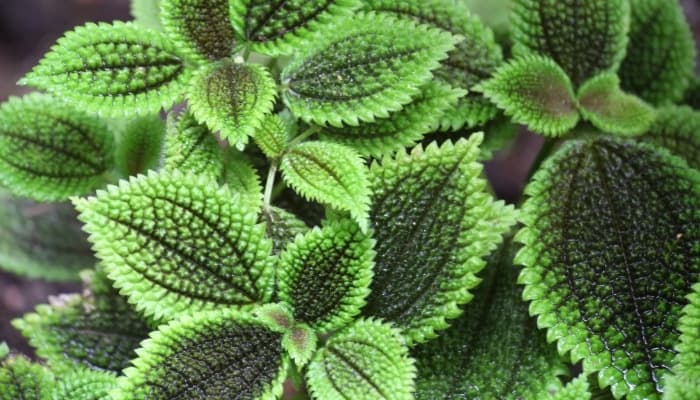If encountered with difficulties, please respond with: “Unable to process the request due to encountered difficulties.”
If you encounter any difficulties, kindly respond with the following error message: “Unable to process the request due to encountered difficulties.”
Revised: A rapid and reliable method for propagating plants is through stem cuttings, particularly useful for cultivars or heirlooms with scarce seeds.
However, not all plants grow through stem cuttings. The following collection includes 25 plants that you can easily propagate with stem cuttings.
1. Pothos

You can propagate pothos through a stem cutting either in the water or soil. The caveat is that whichever medium you choose, you will have to stay with it throughout the life of the plant.
If you start the cutting in water, it cannot be transplanted to a soil medium once the roots have developed, and the opposite is true as well.
Read: Caring for Potho Plants
2. Monstera

Monstera comes in many species and varieties. They almost all propagate well and fast with stem cuttings.
Make sure the stem has the desired fenestration to grow a new plant with the distinctive holes and cuttings in the leaves that give them their appeal.
Once the cuttings have rooted and established, you can plant them in hanging baskets or medium-size pots.
3. Philodendron

Propagate your philodendron in water. When the roots are a couple of inches long, you can transfer them to a pot full of general-purpose potting mix.
If desired, you can also root stem cuttings in a light, fast-draining soil mix.
4. Peperomia

To propagate peperomia from a cutting, choose a healthy stem with leaves growing on it. Cut the stem where it connects with the stalk just above the node.
Remove the bottom leaves, and keep the top three leaves. Dip the cutting in growth hormone powder (I always see good results with this one) to speed up root development.
The roots will grow from the nodes where you removed the leaves.
5. Tradescantia

You can start the stem of Tradescantia either in water or soil, but since the mature plant has amazing colors, many people prefer to start the cutting in water and keep the plant growing inside of a glass vase.
Make sure to change the water regularly to prevent mold growth and diseases.
6. Dracaena

Cut a 6- to 8-inch-long stem from a healthy and mature Dracaena plant. The cutting should have two sets of leaves at the top.
Plant it in a small pot full of sterilized potting mix. Water immediately, and keep the pot in a warm place that gets indirect sunlight.
7. Aglaonema

Aglaonema stem cuttings are easy to propagate. Make sure the stem has at least 5 leaves to ensure maturity. Plant it in a small pot filled with a well-draining potting mix.
Keep the pot in a warm and well-lit place, and avoid exposing it to direct sunlight. The cutting will grow new leaves between 30 and 45 days after planting.
8. English Ivy

You don’t need much experience with plants to grow an English ivy from a cutting. Look for a healthy stem between 6 and 8 inches long on a mature plant.
Dip the cut end in root hormone growth powder, and plant it in a fresh potting mix or well-draining regular soil.
The cutting needs strong light but not direct sunlight. Within 8 weeks, you’ll have new leaves.
9. Hoya

Plant the hoya cutting either in the spring or fall. It will grow fast, and you’ll have a mature plant by the summer for spring planting. If you plant it in the fall, you’ll have blooms the next spring.
Use well-draining soil, and mix in plenty of organic materials.
10. Jade

After cutting the healthy jade stem, leave it in a cool and dry place for the cutting to callus. This will prevent cutting rot when you place it in water.
Change the water every couple of days, and keep the plant away from direct sunlight. When the roots emerge from the cutting, transplant the jade to quick-draining soil.
11. Fittonia

To plant a Fittonia plant from a stem cutting, you will need a 6-inch stem with at least two leaves at the top. Cut it at the node to ensure that roots will grow out of the node.
Place the cutting in a jar full of water, and keep it in bright but indirect light. When the roots are about 2 inches long, move the seedling to the pot or the garden.
12. Spider Plants

Spider plant “babies” are called spiderettes. These are small shoots that you can separate from the plant and keep in water until they develop roots before you move them to the soil.
Another option is to plant the spiderette right beside the parent plant without making any cuts. When the spiderette develops roots, cut it from the parent, and plant it in a pot of its own.
13. Pilea

Baby Pilea shoots grow at the base of the mature plant. The largest ones are the most mature and ready to plant.
Cut an offset with a sterilized blade, and keep it in water until roots emerge. Then plant it in a medium-sized pot, and water it immediately.
14. Begonia

All types of begonias grow easily either from stem or leaf cuttings. There are few requirements for the stem cutting you extract from the plant.
As long as it’s at least 2 inches long and has a leaf or two attached, it will grow once you plant it in the soil. It will take about 6 weeks or more for the cutting to grow new leaves of its own.
15. Arrowhead

To grow an arrowhead from a stem cutting, choose a healthy stem 6 to 12 inches long. Cut it just below the node to accelerate root development.
You can either plant it in the soil or place it in water until the roots emerge. It takes about 2 weeks for root development and 4 weeks for the new leaves to grow.
16. Christmas or Thanksgiving Cactus

To start a new Thanksgiving or Christmas cactus, cut a segment from a mature plant with four leaves on it. Keep the segment in a cool and dry place to heal.
After 48 hours, the cutting will be covered with a callus. Plant the segment in the soil, and water it. Roots will develop within 3 to 4 weeks.
17. Herbs

Herbs come in every shape and size imaginable, but not all herbs can be propagated from stem cuttings.
Most herbs will readily grow from seeds, but the following herbs can be propagated easily from the cutting of a healthy plant.
- Mint
- Thyme
- Marjoram
- Oregano
- Bay leaves
- Lemon balm
- Tarragon
- Chamomile
18. Roses

Stem cuttings are usually the best way to propagate roses considering that seeds often produce totally new roses with different blooms from the parent.
Cut a stem 4 to 6 inches in length, and remove the bottom leaves. The cutting shouldn’t have a flower on it.
Slice the bottom of the cutting, and dip it in growth hormone powder. Plant the cutting in light soil, and keep it moist until new leaves emerge.
19. Camellias

It’s easy to grow camellias from stem cuttings. All you need is access to a healthy and mature camellia.
Cut a tender shoot, and dip it in a root hormone powder. Plant it immediately in a growing medium. Keep the medium loose, and don’t compact it. Sprinkle enough water to get it slightly moist.
20. Lantana

A 4-inch cutting from a lantana plant is enough to start a new plant. Remove all the leaves on the stem except a single leaf at the top.
Plant it in a potting mix made up of equal portions of perlite and peat moss. Dig a hole 2 inches deep, and plant the cutting.
Water the potting mix, and keep it moist until the cutting grows new leaves.
21. Boxwoods

Start your boxwood cutting in the fall as it will take up to 3 months just to develop roots. Overwinter it in a warm and well-lit place avoiding direct sunlight.
Water the cutting when the top 2 inches of soil are dry. In the spring, the cutting is ready to be transplanted outdoors.
22. Hydrangeas

Select a stem about 6 inches long with lots of leaves on it. Cut it below a node, and remove the bottom leaves.
Dig a hole 3 inches deep in the soil, and plant the cutting so that at least two nodes are under the surface of the soil. Firm the soil, and water it to get it moist.

Gardenia stem cuttings need loose and well-draining soil to grow. A potting mix of perlite and peat moss in equal portions is the ideal medium to start gardenias.
Dip the cutting in growth hormone powder, and plant it in a hole in the medium.
Water the cutting to get the medium moist and place the pot in a well-lit place with temperatures around 75 degrees Fahrenheit. Avoid direct sunlight.
24. Crepe Myrtles

To get the right stem for your crepe myrtle cutting, wait until the shoots are semi-hard around the middle of the growing season. Then cut a 6 to 8-inch stem with at least three nodes on it and a few leaves.
Remove the bottom leaves, and plant the cutting immediately.
25. Jasmine

To grow jasmine from a stem cutting, fill a pot with sand and cut the tip of a shoot. Remove the bottom leaves, and dip the cutting in hormone powder.
Plant it in the sand, water it, and cover it with a plastic sheet. Then place the pot in the sun. After one month, roots will develop, and you can transplant the seedling.
Conclusion
Stem cuttings are usually easy to grow and will often produce a new plant that’s identical to the parent plant.
With minimal effort, you can easily multiply your plant collection or just clone a few favorites, so why not give it a try?

